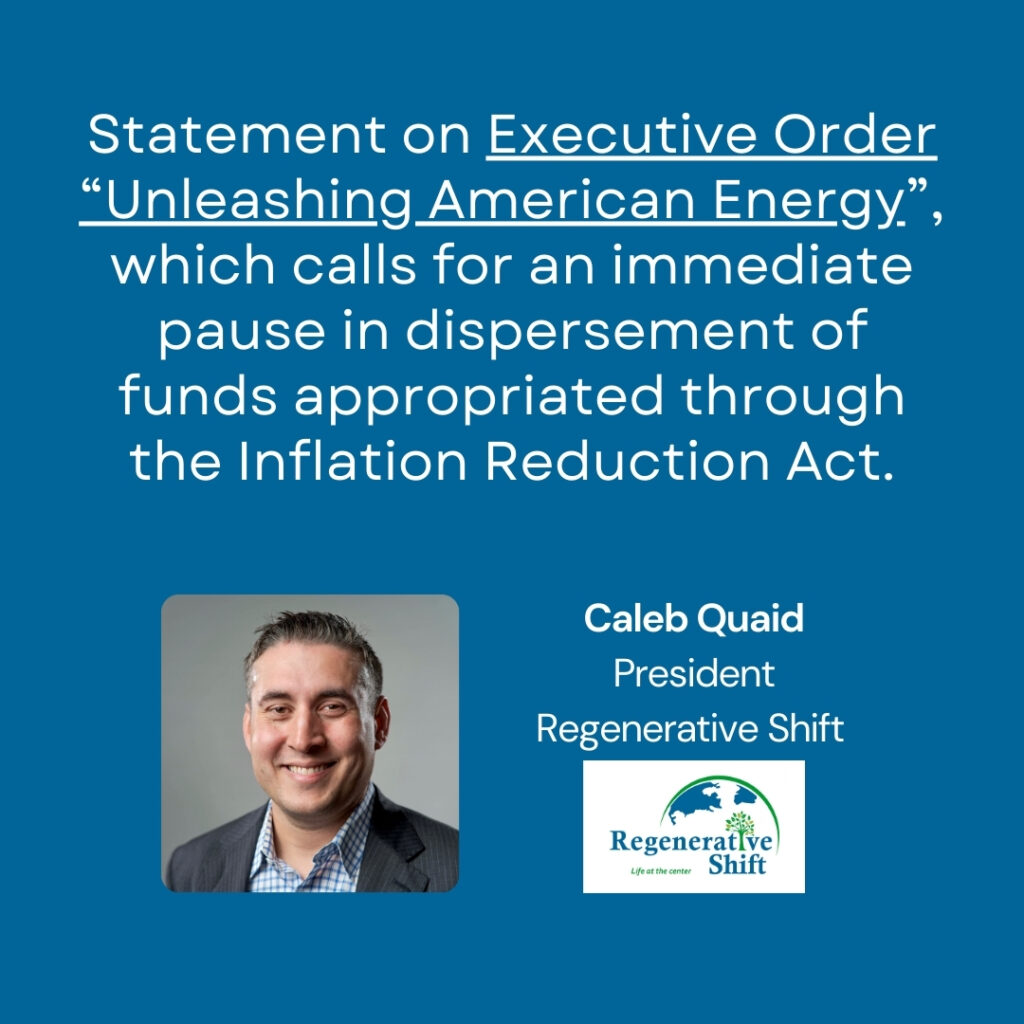
Statement on Executive Order “Unleashing American Energy”, which calls for an immediate pause in the dispersement of funds appropriated through the Inflation Reduction Act
As President of Regenerative Shift, I work closely with businesses, nonprofit organizations, and municipalities to implement renewable energy and sustainable infrastructure projects funded through the Inflation Reduction Act (IRA) and the Infrastructure Investment and Jobs Act (IIJA). These laws have been catalysts for innovation, investment, and progress in clean energy and resilience across the country.
Section 7 of Executive Order “Unleashing American Energy”, which was signed by President Trump on January 20, 2025, calls for an immediate “pause in the disbursement of funds” appropriated through the IRA and IIJA, and introduces significant uncertainty for projects that are already in progress and for those currently being planned. Many of these projects, including renewable energy installations, infrastructure upgrades, and energy efficiency initiatives, depend on the reliability of federal incentives to move forward. A pause in funding jeopardizes these efforts, undermining the confidence of stakeholders, investors, and the communities that stand to benefit most.
This uncertainty creates a ripple effect that is difficult to overstate. Developers are hesitant to commit resources without assurance of funding, municipalities may delay critical infrastructure upgrades, and businesses relying on these funds to pursue operational and sustainability goals are left in limbo. The result is not only delayed projects but also lost opportunities for job creation, reduced emissions, and the economic benefits these projects are designed to deliver.
For example, Renaissance Arts and Education, operating as Manatee School for the Arts, a 501(c)(3) public charter school located in a low-income community in Palmetto, FL, is currently under contract and in final design for a 2.0 mW rooftop solar installation. This project intends to use IRS Elective Payment as a key funding source. However, without clarity on funding disbursement, the school faces uncertainty on whether they will be able to access this vital financial support for a project that not only reduces energy costs but has committed to purchasing domestically-produced materials and to paying prevailing wages to all laborers on the project.
I urge the Administration to provide immediate clarification to “Unleashing American Energy” on the scope and timeline of this pause. Clear guidance is essential to maintain momentum on projects that align with our nation’s goals for energy independence, economic growth, and environmental resilience. While I understand the need to evaluate programs for efficiency and accountability, I believe this can be achieved without disrupting the essential progress being made through the Inflation Reduction Act.
At Regenerative Shift, we remain committed to supporting the organizations we work with and advocating for stability and certainty needed to continue advancing regenerative, life-centered solutions. I look forward to working with federal agencies and partners to ensure these vital programs can fulfill their potential to build a more resilient and prosperous future.
Sincerely,
Caleb Quaid
President, Regenerative Shift
